calsfoundation@cals.org
Paul Laurence Dunbar High School
aka: Dunbar Junior and Senior High School and Junior College
Dunbar Junior and Senior High School and Junior College, located at the corner of Wright Avenue and Ringo Street in Little Rock (Pulaski County), is significant in four areas: African American history, education history, legal history, and architecture/engineering achievement. From 1929 to 1955, Dunbar offered a comprehensive education for Black students in Little Rock. The building was added to the National Register of Historic Places in 1980. Nearby residential properties comprise the Paul Laurence Dunbar High School Neighborhood Historic District.
Known historically as a Rosenwald School and funded in part by Jewish philanthropist Julius Rosenwald—president of Sears, Roebuck and Company—Dunbar Junior and Senior High School and Junior College was completed in 1929 as the Negro School of Industrial Arts. It was part of a comprehensive nationwide program, funded primarily by Rosenwald, to improve the quality of public education for African Americans in the early 1900s. Dunbar was one of 338 Rosenwald Schools built in Arkansas.
The Black citizens of Little Rock and the city’s school board were equally pleased to receive outside funding and encouragement for the construction of a new building for the education of African Americans. At the time, Little Rock had five elementary schools and one high school for African Americans, but the high school—M. W. Gibbs High School at the corner of 18th and Ringo streets—was too small for its enrollment and deteriorating. Little Rock High School (called Little Rock Central High School since 1953) had just been completed at a cost of $1.5 million, which had depleted potential funding for new construction of schools in Little Rock for students of any race.
All the same, African-American leaders were disappointed that the Rosenwald Fund’s directors intended the new school to be an industrial school. They preferred a school that would offer classes covering a range of topics and that would prepare students for college rather than only provide them with labor-force skills. This preference was reflected in the change of name from the Negro School for Industrial Arts to the Paul Laurence Dunbar High School. Paul Dunbar (1872–1906) was a Black author who had produced twelve books of poetry, four novels, and four books of short stories; he also wrote or co-wrote several plays. The new school in Little Rock was one of seven schools in the United States built for African-American students and named for Dunbar.
Dunbar architecture and curriculum were adapted to fit the Tuskegee model, created by Booker T. Washington, then principal of the Tuskegee Normal and Industrial Institute (now Tuskegee University) in Alabama. Stemming from an educational philosophy of self-help for Black Southerners, the curriculum emphasized economic advancement through vocational education that did not challenge racial segregation and disfranchisement of Black voters. With this strategy, Washington attracted support and funding from Black and white Americans who wanted to attain equality in education but who feared that any confrontational approach might give a free rein to white hostility.
George H. Wittenberg and Lawson L. Delony of the Wittenberg & Delony Architects Firm of Little Rock designed, engineered, and built the school. Built on a southeast-northwest axis in a residential area south of downtown Little Rock, Dunbar was the architect’s second major school project. Just two years before the opening of the Negro School of Industrial Arts, the same architects had designed and completed what is now Central High School. The design of the building adhered to a functional style that optimized the use of space and circulation. With functionality in mind, the building was fashioned to accommodate academic and vocational programs. With decorative brick and stone work and conspicuous towers, the design showcased the Art Deco style of the period.
In a dedication ceremony on April 14, 1930, Dr. Alfred K. Stern, director of the Julius Rosenwald Fund, addressed the crowd. Samuel L. Smith, the Southern supervisor of the fund, also attended. The $400,000 project had received a total of $67,000 from the Rosenwald Fund and $30,000 from the General Education Board. The remainder of the funding had been raised locally. Stern of the Rosenwald Fund had worked with R. C. Hall of the Little Rock schools and C. R. Hamilton, Arkansas’s superintendent of Negro Schools, to plan and accomplish the project. The building, when completed, had thirty-four classrooms, including physics, chemistry, and biology laboratories; a library of 8,000 volumes; an auditorium that seated 1,000; a cafeteria; laundry facilities; and seven industrial shops.
The new building housed classrooms for grades seven through twelve and also had a wing for Dunbar Junior College, a two-year institution with an emphasis upon training teachers. Seventy-four students were enrolled in the junior college, and the first graduating class of the high school in 1930 consisted of fifty-eight students. The junior and senior high school enrolled 1,163 students in the fall of 1930. Over the next twenty-five years, a wide variety of classes were offered, ranging from Latin and algebra to carpentry, plumbing, and sewing. “Negro history” was regularly included in the curriculum. Extracurricular activities included athletics (football, basketball, baseball, track and field, volleyball, and tennis), music, drama, debate, and a chapter of the National Honor Society.
The junior college program at Dunbar was terminated abruptly in May 1955 by its board of trustees. No reason was ever given for the decision to close the school, a decision made during a closed meeting of the board on March 28, 1955. In September 1955, Dunbar became a junior high school as new facilities for Horace Mann High School were under construction; however, Horace Mann students continued at the Dunbar site until the new high school opened for students on April 9, 1956, at 24th and McAlmont streets.
Some of the members of the Little Rock Nine, who desegregated Central High School in 1957, were students at Dunbar and were recommended for attendance at Central by their principal, Edward Luther Hawkins Sr.
The Little Rock School District is still using the Dunbar building as an active school, known as Dunbar Magnet Middle School. Meanwhile, the National Dunbar Alumni Association has been strongly active in organizing regular reunions of its members, working for continuing recognition of the history of the school, and providing funding for scholarships and for landscaping of the school grounds, among other projects. Through their efforts, Paul Laurence Dunbar High School was added to the National Register of Historic Places on August 6, 1980.
For additional information:
“600 Negro Students Moving Tomorrow into New Million-Dollar High School.” Arkansas Gazette, April 8, 1956, p. 17A.
“Dunbar Jr. and Sr. High School.” National Register of Historic Places nomination form. On file at Arkansas Historic Preservation Program, Little Rock, Arkansas. Online at https://www.arkansasheritage.com/arkansas-historic-preservation-program (accessed July 7, 2023).
Flaherty, Joseph. “‘National Significant’ Sought for Site.” Arkansas Democrat-Gazette, July 7, 2023, pp. 1B, 6B. Online at https://www.arkansasonline.com/news/2023/jul/07/little-rock-officials-hope-to-obtain-federal/ (accessed July 7, 2023).
Hoffschwelle, Mary S. The Rosenwald Schools of the American South. Gainesville, FL: University Press of Florida, 2006.
Jones, Faustine Childress. A Traditional Model of Educational Excellence: Dunbar High School of Little Rock, Arkansas. Washington DC: Institute for the Study of Educational Policy at Howard University, 1981.
Jones-Wilson, Faustine C., and Erma Glasco Davis. Paul Laurence Dunbar High School of Little Rock, Arkansas: “Take from Our Lips a Song, Dunbar to Thee.” Virginia Beach, VA: The Donning Company, 2003.
Kwendeche. “Paul Laurence Dunbar High School, Little Rock.” Preservation Architect: The Newsletter of the Historic Resources Committee. American Institute of Architects.
National Dunbar Historical Collections. Center for Arkansas History and Culture, University of Arkansas at Little Rock. Finding aid online at https://arstudies.contentdm.oclc.org/digital/collection/findingaids/id/9387/rec/1 (accessed August 24, 2022).
Sheila Witherington
Little Rock, Arkansas
Staff of the CALS Encyclopedia of Arkansas
 Davis, Erma Lee Glasco
Davis, Erma Lee Glasco Early Twentieth Century, 1901 through 1940
Early Twentieth Century, 1901 through 1940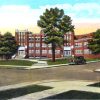 Education, Elementary and Secondary
Education, Elementary and Secondary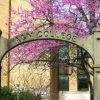 Education, Higher
Education, Higher Morton, Herwald "Hal"
Morton, Herwald "Hal" Williams, Robert Lee, II
Williams, Robert Lee, II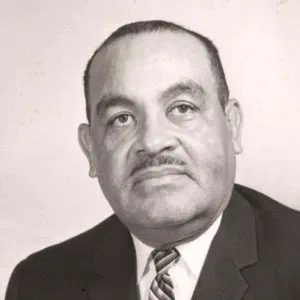 LeRoy Christophe
LeRoy Christophe 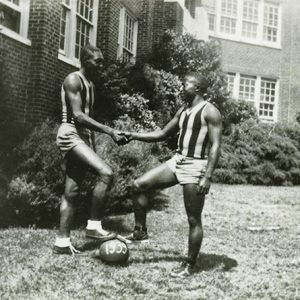 Woodrow W. Crockett and James Giggens
Woodrow W. Crockett and James Giggens 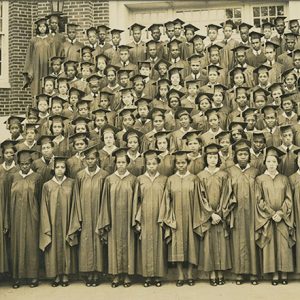 Dunbar High Class of 1939
Dunbar High Class of 1939 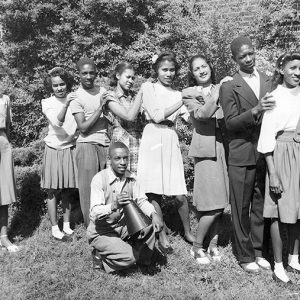 Dunbar High Pep Squad
Dunbar High Pep Squad 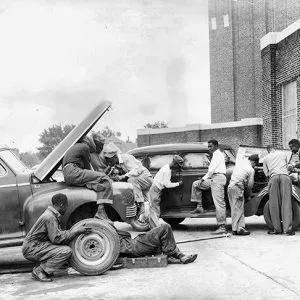 Dunbar High School Auto Mechanics Class
Dunbar High School Auto Mechanics Class 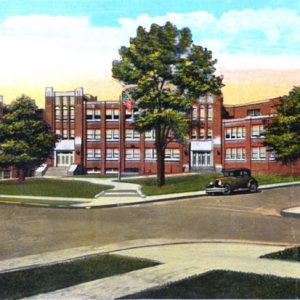 Dunbar High School Postcard
Dunbar High School Postcard 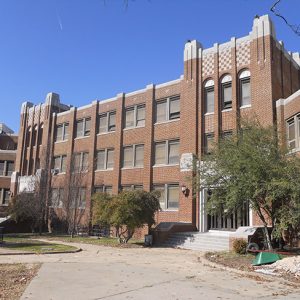 Dunbar Junior and Senior High School
Dunbar Junior and Senior High School 



Comments
No comments on this entry yet.